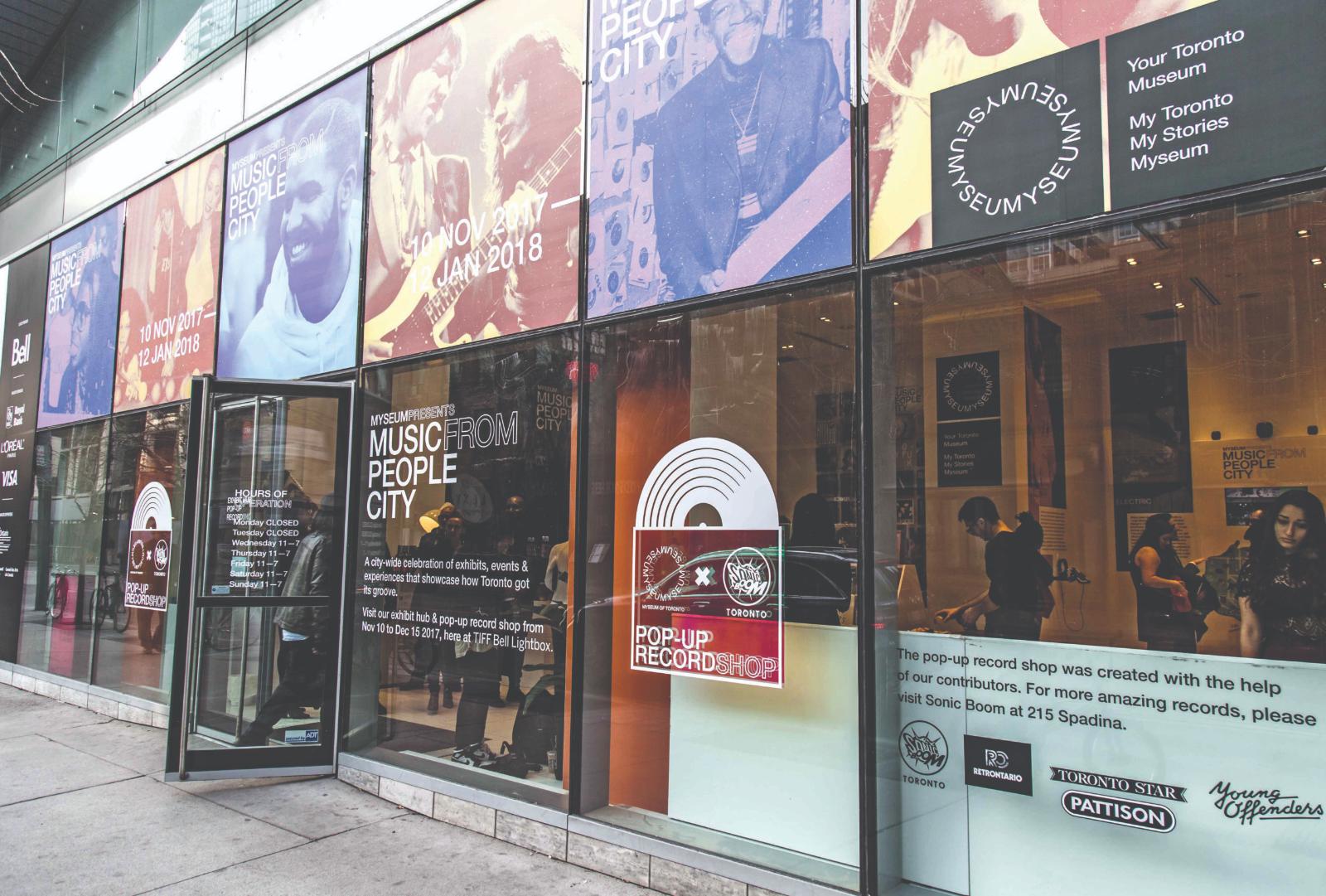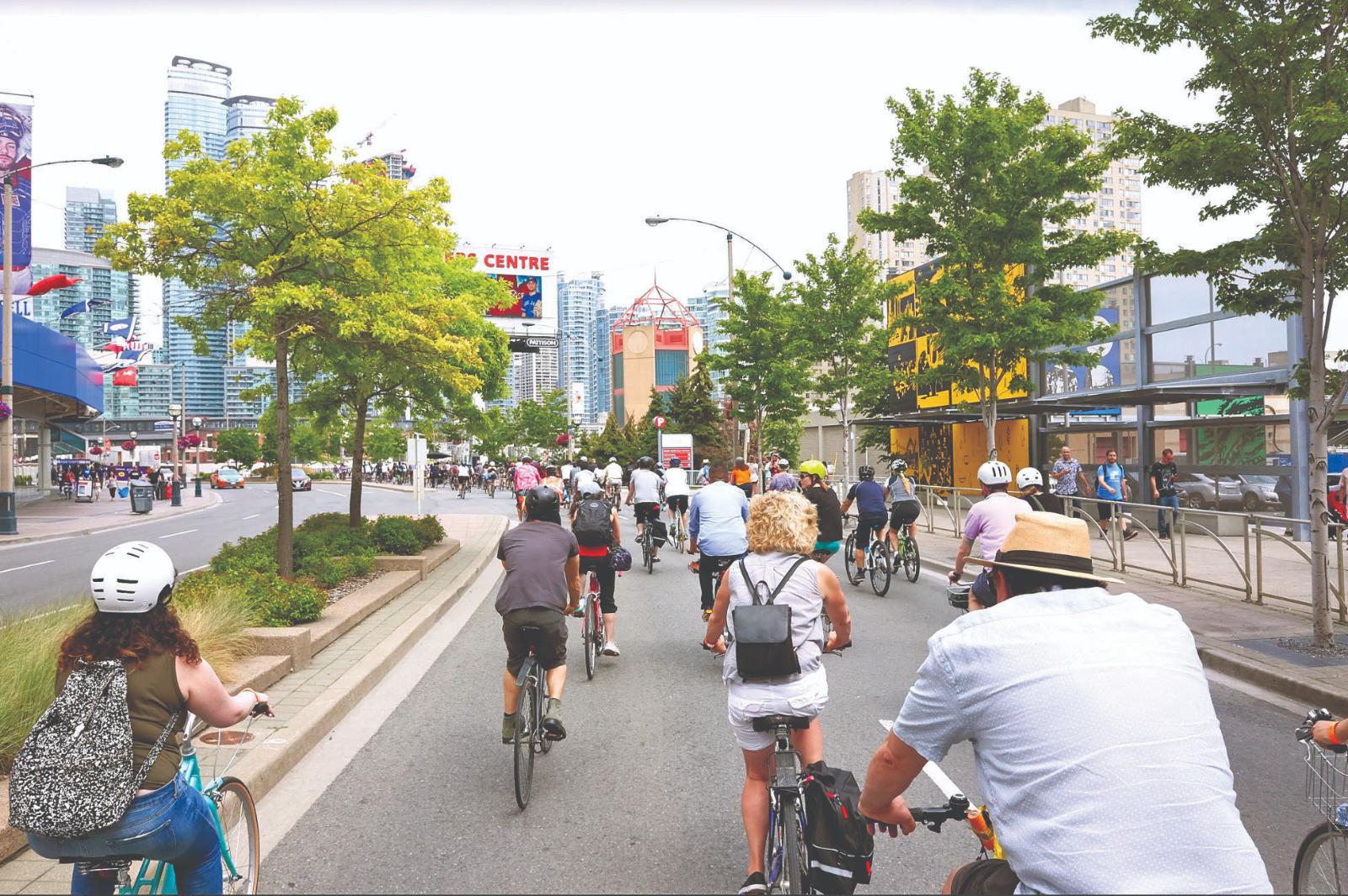
MYSEUM OF TORONTO EXPLORES LOCAL CURIOSITY & CULTURAL DIALOGUE
BY Jordan Adler
Toronto is a town with three area codes, six core boroughs, and a broader metropolitan area that balloons the city’s population to roughly six million people. So, how does one even imagine creating a museum that encompasses not just the spirit of Canada’s biggest city but its many communities that have gone through hundreds of years of transformation?
For Karen Carter, the executive director of the Myseum of Toronto, capturing the city in a museum could only work if the city was its own museum. “It requires people to see themselves in it,” she says. “Most city museums are struggling with people coming. You go once and then you feel like you’ve done it, so why go back? A museum should be relevant…It should be a place that makes you, if you live in this city, feel like it says something to you.”
Unlike the common conception of a museum, where people show up to a vast building and expect to hear about history from seasoned curators, the Myseum of Toronto partners with arts and culture groups around town. With these groups, they collaborate on, and sometimes co-create, pop-up exhibits that shine a light on the diverse spectrum of stories and experiences in the city. The locations of these displays span from housing communities in Etobicoke to the suburbs of Scarborough.
The Myseum doesn’t even have a headquarters; instead, the programming takes precedence. “Our priority is having Torontonians feel like their story is being told, and for them to be proud of it,” says Carter, who worked at Heritage Toronto before joining the Myseum. “It’s as important that people know about Lord Simcoe or The Ward or Chinese-Canadian history or Jewish-Canadian history in Kensington Market, as it is to know about the Syrian refugees and the significance of that, and the response of Torontonians to that [influx] over the last couple of years.”

The Myseum launched in May 2015, as a privately-run non-profit museum. Its board of directors includes philanthropist Diane Blake and former Toronto mayor David Crombie. To begin its outreach into the city, the organization’s small staff spent time canvassing at festivals and events around town for an initiative called Myseum on the Move.
At these gatherings, organizers asked locals to share memories, stories, and coveted artifacts that could articulate the diversity of Toronto. In this regard, the museum was emphasizing the “my” part of its name, letting locals help to define their nascent digital archives and signal the kinds of city-oriented programming they wanted to see.
This local consultation even inspired one of the Myseum’s banner festivals, Intersections, which now launches annually on March 6 (Toronto’s birthday). That title is itself layered, focusing on the cultures and communities that overlap, interact, and connect throughout the city. “If you come from Toronto, you have to work really hard to be singular,” Carter says. “You just know about a lot more because this city forces you to bump against the other all the time.”
To prepare Intersections, the Myseum gives out micro-grants to cultural organizations across the GTA who can come up with fascinating mini-projects underneath the festival theme. Carter considers these smaller grants essential to ensure the exhibitions can spread throughout the city and find a broad audience. Meanwhile, the early spring dates enable the various groups with which the Myseum wants to collaborate to have creative freedom; then, local artists aren’t as tied up with summer projects.
These partnerships between the Myseum and artistic organizations also ensure that residents feel as if they are involved in forming what Carter terms “the Toronto narrative.” As she explains, Torontonians can be the best marketing agents for their community’s stories and personal experiences.
The most recent slate of Intersections programming, under the banner Arrivals + Departures, was an assortment of more than 20 exhibits, events, or workshops. Where Are You From? Where Are You Going? had Black and Indigenous artists from around the city exhibiting their work on screens at Mississauga Celebration Square. The event pushed marginalized perspectives into a public space.
Another project focused on the convergence of Chinese and Jewish communities. A Place for Wholesome Amusement concentrated on a building near Dundas Street West and Spadina with a history as a 700-seat Yiddish performance space for Toronto’s Jewish community, and later, as a cinema showing Chinese films, where it served as a hub for new immigrants.
During a time when dialogue around representation leads the conversation, Carter says she hopes the future of Myseum will belong to new voices: people with confidence and compassion, and who can speak with clarity about their position in the broader culture. The museum diversifies by providing openings for young curators, many of whom are recent university graduates, to create and participate.
“We’re finding there’s a lot of people who are interested in showcasing their own ideas and their own voice, and they’ve been just waiting for the opportunity,” Carter says. She adds that she hopes the Myseum’s funding model can adjust to allow more opportunities for these savvy cultural stewards: “There’s a line of brilliance behind me that could do my job with their eyes closed.”
This summer, Myseum on the Move will return to the city, emphasizing the movement integral to the activity’s name. Among the scheduled pop-up experiences is an urban scavenger hunt – no cars allowed – that will take participants through the history of Toronto’s theatres (July 8). Meanwhile, a walking tour through The Ward (scheduled for July) will explore the women who contributed mightily to the city’s prominent immigrant neighbourhood in the late nineteenth and early twentieth centuries. David Crombie is also planning to lead a boat tour in August that will focus on Toronto’s waterfront history.
In the spirit of the inaugural Myseum on the Move, an event called Myseum Collects will take place on June 16. Torontonians will be able to share artifacts and stories – under the theme of transportation – that will help to comprise the museum’s digital collection on a newly refurbished website.
Carter says there is an increasing need for this local curiosity and cultural dialogue, in a time when gentrification makes the idea of preserving Toronto’s rich histories even more essential. Much of the Myseum’s programming already spotlights the distinct architecture and beautiful natural spaces that Toronto possesses.
With engaged communities helping to teach, create, and curate, citizens and tourists can experience this sprawling metropolis in a way that feels intimate. “It forces people to leave their neighbourhoods and go see things that they otherwise wouldn’t see,” Carter says of the Myseum’s cross-town programming. “Even I’m learning things about the city that I would’ve thought I knew. It’s been fascinating.”
For more information on Myseum of Toronto’s summer programming visit www.myseumoftoronto.com
